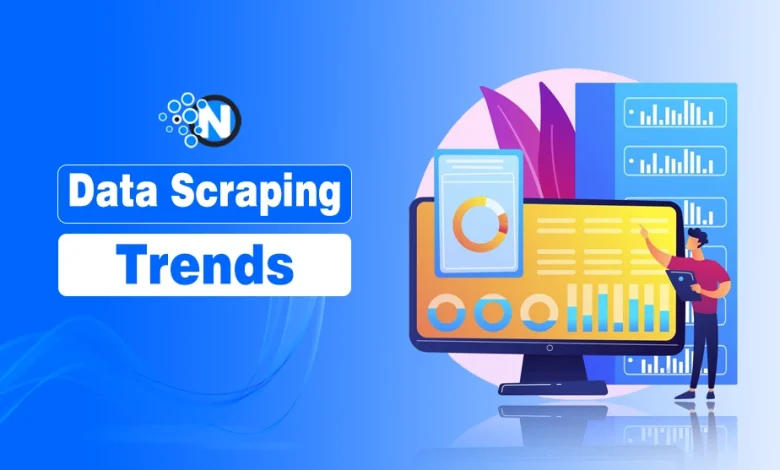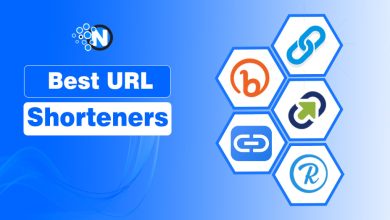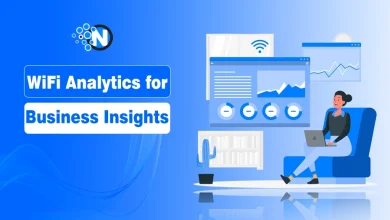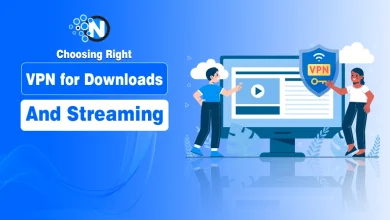5 Best Data Scraping Trends in 2025

Businesses, academics, and developers now use web scraping as their go-to method for finding internet information. Web scraping involves more than just collecting data; it also involves turning it into trend analysis, new inventions, and more informed choices.
The market reflects its rising importance: $489.01 million in 2023. The industry is set to grow by 13.25% annually, reaching an impressive $2.45 billion by 2036 (Infomineo). This quick growth shows the need for web scraping techniques to maintain competitiveness in a data-driven environment.
As we approach the year 2025, navigating the latest data scraping trends is necessary. Regarding data scraping, the field is expected to change a lot this year.
Let’s navigate the top data scraping trends and what the industry will offer us this year and beyond!

Why Web Scraping Is Growing in 2025
Web scraping is becoming a must-have for leaders in 2025. With so much happening online, businesses need smarter ways to gather information to stay ahead. Whether spotting market trends, understanding customer behavior, or monitoring competitors, professional web scraping service providers make it easier to make better decisions.
In e-commerce, it’s all about staying competitive. Scraping helps track pricing and product trends to refine strategies. In finance, it analyzes market changes and finds new opportunities. Digital strategists and marketers rely on it to understand their audiences, shape campaigns, and improve engagement. Across the board, it helps teams collect the information they need to move quickly and stay relevant.
Another big driver is the demand for real-time updates. Companies cannot afford to delay providing outdated reports. Scraping tools offer new, current information and help leaders make quick, well-informed choices. Being able to move quickly is crucial when taking advantage of opportunities or adapting to changes in client preferences.
For business leaders, data scraping services are key to staying competitive. The real challenge now is figuring out how to use it in ways that bring the best results.
Top 5 Data Scraping Trends in 2025
Web scraping services in the USA continue to evolve. And 2025 was an exciting year for the field. The tools and methods used for scraping are getting smarter and more effective as companies depend more on web information to make choices.
1- AI-Powered Scraping
Artificial intelligence is making web scraping smarter and more efficient. AI can adapt independently, unlike older tools that require strict rules to work. It learns from the structure of websites, figures out patterns, and adjusts automatically when websites change their layout. This makes AI tools perfect for scraping websites with dynamic content or those that try to block scraping.
AI also improves accuracy. For instance, it can filter unnecessary information and organize results without much human input, saving businesses time and resulting in cleaner, more reliable results.
Benefits:
- Adaptability: Handles changes in website layouts automatically.
- Efficiency: Reduces manual adjustments and improves speed.
- Accuracy: Delivers clean and organized information.
Imagine an online retailer that wants to track product prices from competitors’ websites. An AI-powered tool can navigate complex pages, avoid detection, and gather the latest prices automatically. This allows the retailer to adjust its pricing strategy quickly to stay competitive.
2- APIs as a Reliable Alternative
Application Programming Interfaces, or APIs, are an increasingly common way to collect data from websites. APIs offer immediate access to certain information, unlike traditional scraping approaches that duplicate every bit of a webpage to find data. Many websites now offer APIs to allow businesses to access their content in a structured and legal way.
For businesses, APIs simplify the process by delivering clean, ready-to-use information. Additionally, they minimize the possibility of encountering legal or technological problems that may occur with more established online scraping service companies. APIs are especially helpful for sectors like stock market tracking and e-commerce inventory management that depend on real-time information.
Benefits:
- Clean Data: Information is already structured and ready to use.
- Reliability: Reduces the risk of errors or blocks during collection.
- Real-Time Updates: Accesses fresh information quickly.
A financial analyst can use APIs to collect stock market updates from various platforms. Instead of scraping data from dozens of websites, the analyst retrieves precise, real-time figures directly from the APIs. This ensures accuracy and speeds up analysis, enabling better investment decisions.
3- Cloud-Based Scraping
Cloud-based web scraping makes it easier for businesses to handle large projects without worrying about hardware limitations. Instead of running scraping tools on a local computer, cloud-based platforms operate on remote servers. This allows businesses to scale up their scraping tasks as needed, handling bigger workloads without slowing down their systems.
Cloud-based tools are also user-friendly. Many platforms offer built-in features like task scheduling and automated workflows, making the process more efficient. Teams can collaborate on projects from different locations, with results stored securely in the cloud.
Benefits:
- Scalability: Handles large projects without hardware issues.
- Convenience: Automates tasks and allows remote access.
- Collaboration: Teams can share and manage results easily.
A marketing agency often conducts a comprehensive scraping project to gather consumer feedback from various e-commerce platforms. Using a cloud-based solution, the agency can effectively manage the workload and save all findings in one safe place. The agency’s team members, who are spread around various places, will have real-time access to and analysis of the data.
4- Visual Tools for User-Friendly Scraping
Visual scraping tools are removing barriers for people who aren’t tech-savvy. These platforms allow users to collect information without writing code. The application does the rest; users need to click on the content they wish to scrape. This enables marketers, academics, and small company owners without technological experience to use web scraping services.
Many visual tools also include templates and pre-set workflows for common scraping tasks, saving users even more time. Businesses can gather valuable information quickly and efficiently without hiring a developer or learning complex programming.
Benefits:
- Ease of Use: No coding skills required.
- Time-Saving: Pre-built templates for common tasks.
- Accessibility: Opens up scraping to a wider audience.
A small business owner 100% wants to collect product descriptions and pricing information from a competitor’s website. Using a visual scraping tool, they can simply click on the information they need, and the tool will automatically collect it. The owner can then use this information to adjust their product offerings and stay competitive.
5- Real-Time and Dynamic Data
Businesses increasingly rely on real-time data to make informed decisions. Real-time scraping allows companies to monitor trends as they happen, providing a competitive edge in fast-paced industries like finance and e-commerce.
Businesses can use real time data to make wise and informed decisions for better growth and customer experience.
Benefits:
- Immediate Insights: Quick insights help in decision-making.
- Enhanced Customer Experience: Real-timedata helps improve customer experience.
- Competitive Advantage: Access to real-time data helps stay ahead of competitors.
- Informed Marketing Strategies: Real-time data to track the performance of their campaigns.
Final Words
Each trend offers unique benefits. All are very helpful, from saving time and reducing errors to improving accuracy and scalability. Companies can get important insights and maintain a competitive edge in their sectors using these innovations.
FAQs
What tools can you use for web scraping?
Web scraping tools range from basic browser extensions to more sophisticated choices. Cloud-based solutions that can easily manage large-scale scraping, APIs for simple access to structured data, and Python libraries like Beautiful Soup and Scrapy are popular.
What are the benefits of AI-powered web scraping?
Scraping tools with AI capabilities may automatically adjust to website changes, increasing process efficiency. These tools can also clean and organize data as they collect it, saving businesses time and reducing errors. AI is like a partner that helps scrape dynamic content that traditional tools might miss, offering more accurate and up-to-date information.
How can APIs be used for web scraping?
APIs are a reliable alternative to traditional web scraping. Instead of scraping data from a website’s page, APIs give direct access to specific information. This method is faster and cleaner. Why? Because the data is already structured, making it easier to integrate into business systems without additional cleaning or processing.
What are the best tools for beginners to start web scraping?
For beginners, visual scraping tools are great. These tools don’t require coding skills and let users collect data by clicking on the necessary information. Many user-friendly platforms have templates and guides to help you get started. Another excellent option is cloud-based solutions, which facilitate collaboration and scaling without requiring complex technical expertise.
How can web scraping benefit small businesses?
Without the enormous spending of larger businesses, it helps small companies understand client demands, identify sales possibilities, track rivals, and gather market data. It’s an economical method of maintaining competitiveness.




